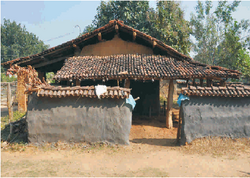Social structure
The Bagatas of Andhrapradesh retain the original socio-cultural characteristics, whereas the Bagatas of Odisha undergone various socio-cultural purification process and are largely Hinduised. The Bagatas of Odisha are broadly divided into two divisions i.e. Vaishnavites and Saivites according to their beliefs. [3]
The Bagata of Vaishnavas section is divided into totemic clans like Belhar (monkey), Samudia, Bamia, Tiruar (bird), Sarania (flute), Nag, Hatiar (elephant), Chumiar and Kuardar. They use their clan as a surname. However, some authors opined that there was no surname or subgroup system in them but after migration, they adopted those and now almost use surnames like other Hindu societies. Historically, they migrated to the Ranchi region of Chota Nagpur from Andhrapradesh before the 20th century and subsequently migrated to the northern district of Odisha. [3]
In 1976 the Bagata had the highest rate of indebtedness of any of the scheduled tribes of Andhra Pradesh.
